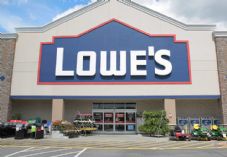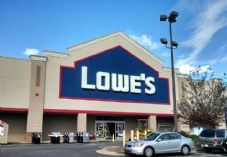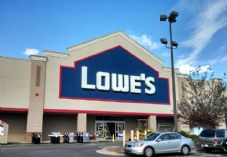International DIY News
Why Lowe's is so patient with Masters' growing pains
Regardless of the pain that home improvement chain Masters has inflicted on its parents, Woolworths and Lowe’s of the US, both appear to have the patience to wait until the juvenile business develops to maturity.
That patience was reinforced when Lowe’s held its quarterly investor day. Lowe’s, which owns one-third of the joint venture with Woolworths and was brought on board for its management expertise and buying muscle, is the second-largest home improvement retailer in the US.
Lowe’s says the long-term value drivers of the joint venture remain intact because there is still opportunity for significant growth in a highly fragmented market.
Part of the opportunity is Australia’s long-term obsession with housing and home renovating.
Home ownership rates are around 70 per cent and Bunnings and Masters between them claim less than a quarter of the $45 billion home improvement market, leaving an enormous opportunity for the two players to consolidate their positions.
Lowe’s says that its international operations in Canada, Mexico and Australia are focused on tailoring its approach for each market, and it takes a long-term view to obtaining “compelling” returns.
Lowe’s head of international operations, Doug Robinson, says the group’s partnership with Woolworths has enabled it to open stores at a faster rate here than in either Canada or Mexico, but the time has come to slow the rapid pace of expansion.
Since Masters first opened its doors in 2011, a total of 49 stores have opened. Over the past two years, the business has lost some $330 million, making a substantial dent at least in Woolworths’ $2.5bn annual profit.
“With the establishment of a solid base, the emphasis now is on strengthening the core with an assortment adapted to fit the local market. Similar to the pause we took in Canada after a period of expansion, the venture is currently working to optimise the model and increase customer traffic and conversion rates,” Robinson says.
That means the rollout will be slowed to around 10 new stores each year from 2015 to 2017 to strategically fill in gaps in locations. That will include four in western Sydney in 2015 at a cost of $100m, and is down from initial plans for 20 to 25 a year around the country.
For its part, Woolworths conceded in August (Hardware is the weak spot in Woolworths’ solid showing, August 29) that the chain would not break even in 2016 as originally pledged. Woolworths’ home improvement business lost $169m in 2014 and analysts believe it won’t break even until fiscal 2019.
Analysts at JP Morgan have forecast that losses will widen to $190m next year and that even with Lowe’s as a joint venture partner, the path to profitability is still “challenged” because of the structural problems with the formation of the business.
Investors have hammered Woolworths’ shares this year, chopping 14 per cent off the group’s value. Chairman Ralph Waters noted at the AGM last month he doesn’t share the market’s pessimism, of course, but the market gave that reassurance a lukewarm reception, slicing 8 per cent off the share prices since then in tandem with worries about the core business.
By contrast, the recent uptick in the US housing market has given Lowe’s a real boost, helping lift its shares to a 52-week high after it nudged up its profit guidance in the quarterly analyst update. Its shares are up a robust 30 per cent for the year.
With the US housing market expected to grow faster than GDP next year, US homebuilder sentiment has continued to improve in recent months, according to the National Association of Home Builders.
As the US economy continues to recover and the Federal Reserve contemplates its first lift of post-recession interest rates, the fortunes of Lowe’s are likely to keep improving. Ironically, rising interest rate environments in the past have tended to boost the shares of home improvement stocks as investors respond to the brighter economic outlook. And of course, US homeowners are insulated from rising interest rate costs because their home loans are nearly always fixed.
With international operations accounting for just 2 per cent of Lowe’s overall sales, Masters needs to execute its consolidation plan without further trying the patience or picking the pockets of its wealthy parents.
Source : Victoria Thieberger - BusinessSpectator.com.au
https://www.businessspectator.com.au/article/2014/12/18/retail/why-lowes-so-patient-masters-growing-pains
Thank you for the excellent presentation that you gave at Woodbury Park on Thursday morning. It was very interesting and thought-provoking for our Retail members. The feedback has been excellent.











































